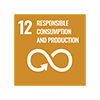Catastrophic hazards management
Catastrophic or natural disaster events at the Group’s industrial assets can have disastrous impacts on workers, communities, and the environment, while also impacting production and resulting in substantial financial costs and harm to our reputation. By recognising and mitigating the risk of a disastrous event, we can better protect our people, communities and the environment.
Our approach
We define catastrophic hazards as those with severe consequences that could cause widespread loss of life or significant environmental harm or result in major reputational or financial damage. We are committed to eliminating catastrophic incidents at our industrial assets.
We recognise the exceptional nature of such events and have developed specific programmes to actively identify, monitor and mitigate catastrophic hazards within our industrial business. We review our management of catastrophic risks to understand whether they are adequately controlled. We require our industrial assets to put in place appropriate management and mitigation measures.
Our approach supports consistency across the business for the identification and management of catastrophic hazards, according to leading practice and the International Council of Mining and Minerals (ICMM)’s guidance. Our health, safety, environment, social performance and human rights (HSEC&HR) policies and standards address the catastrophic hazards that present a material risk to our operations, setting out the requirements for the prevention of potentially catastrophic events.
Catastrophic or natural disaster events may arise due to natural causes (flood, earthquake, drought) or due to infrastructure (including underground mines or open-pits or tailings or water storage facility faiure) or equipment failure (such as shafts and winders). Climate change may increase physical risks to our assets and related infrastructure, largely driven by extreme weather events and water-related risks such as flooding or water scarcity.
We identify and manage catastrophic hazards through:
- A five-point risk scale: We classify the severity of potential incidents on a five-point scale from 1 (negligible) to 5 (catastrophic).
- Group fatal hazard protocols (FHPs): Our FHPs set out mandatory requirements to manage common fatal hazards at our industrial assets. Our safety standards provide mandatory requirements to manage fatal and/or catastrophic hazards that exist in selected industrial assets.
- Risk register: We require all our industrial assets to maintain a register of potential catastrophic hazards and to conduct regular verification of the implementation of critical controls, which our industrial commodity departments and Group HSEC&HR review through quarterly reporting.
- Assurance: Group Internal Audit and Assurance (GIAA) audits our catastrophic hazards and critical control management, using both internal and external expert assessors. It gives particular attention to identifying catastrophic hazards, their critical controls and management plans, as well as the effectiveness of verification and reporting process. The Board Health, Safety, Environment and Communities (HSEC) Committee reviews the findings of the catastrophic hazard audits.
- Our commodity departments implement actions at our industrial assets to address findings identified during the audit. GIAA returns to the industrial assets 12 to 18 months later to verify that the findings are substantively addressed and that any identified corrective actions have been closed effectively. Our Board HSEC Committee reviews the status and results of these reports.
We plan, design, construct, operate, maintain and monitor our surface and underground mines, water and tailings storage facilities (TSFs), smelters, refineries and other infrastructure and equipment in a manner consistent with leading international guidelines and standards, such as the Canadian Dam Association and Global Industry Standard for Tailings Management (GISTM). Our approach is designed to prevent incidents and protect our people, assets, communities, the environment, and other stakeholders.
Emergency response preparedness
We require each industrial asset to identify potential emergencies at or adjacent to their operations and to develop an appropriate emergency response plan (ERP). Our industrial assets are required to communicate their ERPs to their employees, contractors and relevant external stakeholders.
Our industrial assets regularly assess their need for emergency equipment, facilities and other resources against their HSEC&HR risk register. We require emergency response preparedness through various measures, including:
- the appointment, training and equipping of rescue teams;
- procedures for responding to specific emergency situations;
- the provision of firefighting equipment as required by the risk assessment;
- a first aid management plan supported by appropriate medical equipment and services;
- the provision of appropriate equipment to assist in rapid containment and recovery of environmental spills;
- a process for dealing with hazardous substances and dangerous goods identified as being at risk of causing an emergency on site; and
- industrial assets are expected to undertake an annual simulation emergency exercise to test their ERP. These include the involvement of external emergency services when appropriate.
Our TSF Framework requires our industrial assets to develop and maintain TSF-specific Emergency Preparedness and Response Plan (EPRPs) to ensure their readiness to respond in the event of a failure. The EPRP provides information on managing the emergency response to a potential TSF failure event that presents a risk to people and the environment.
Tailings storage facilities
We believe that all TSFs can be designed, operated and closed safely.
We have a robust governance process in respect of our TSFs and we monitor them for integrity and structural stability. Flooding and seismic activity are the main natural phenomena that may affect TSFs. Our industrial assets evaluate natural phenomena and incorporate these considerations into their TSF designs where relevant. In addition, our TSFs undergo regular external inspections.
Each industrial commodity department (excluding oil, which does not have TSFs) has appointed an accountable executive and has a responsible person and engineer of record at each industrial asset.
For all ‘Very High’ and ‘Extreme’ consequence-classified TSFs, an Independent Tailings Review Board is in place. Third-party assurance of our TSFs is undertaken by internationally recognised leading dam consultants, typically on a rolling 12- to 18-month basis.
Our online Tailings Manager Academy (TMA) develops the knowledge of our employees with TSF-related responsibilities. It was developed with the assistance of external subject matter experts. We seek to align our TMA with industry guidelines and standards, such as the Canadian Dam Association and GISTM. The TMA covers key aspects of tailings management, from geotechnical and hydrotechnical engineering, environmental and closure actions to emergency response planning and social performance. It includes competency tests and, to support our diverse portfolio of industrial assets, is available in English, Russian, Spanish and French.
We continue to manage closed TSFs responsibly post closure. We regularly inspect our facilities, and external experts conduct independent inspections and reviews.
Further information is available on our Tailings page
Industry-wide collaboration
We work with other stakeholders and create communities of practice to address common challenges across the sector. For example, we participate in the Earth Moving Equipment Safety Round Table (EMESRT) vehicle interaction improvement programme and the ICMM’s initiative for cleaner, safer vehicles.
Principles we follow
-
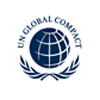 UN Global CompactVisit the website
UN Global CompactVisit the website -
 Principle 7Read more
Principle 7Read morebusinesses should support a precautionary approach to environmental challenges
-

-
 Principle 9Read more
Principle 9Read moreencourage the development and diffusion of environmentally friendly technologies
-
ICMMVisit the website
-
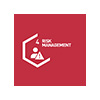
-
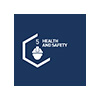
-
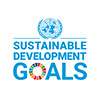 UN SD GoalsVisit the website
UN SD GoalsVisit the website -
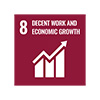
-
